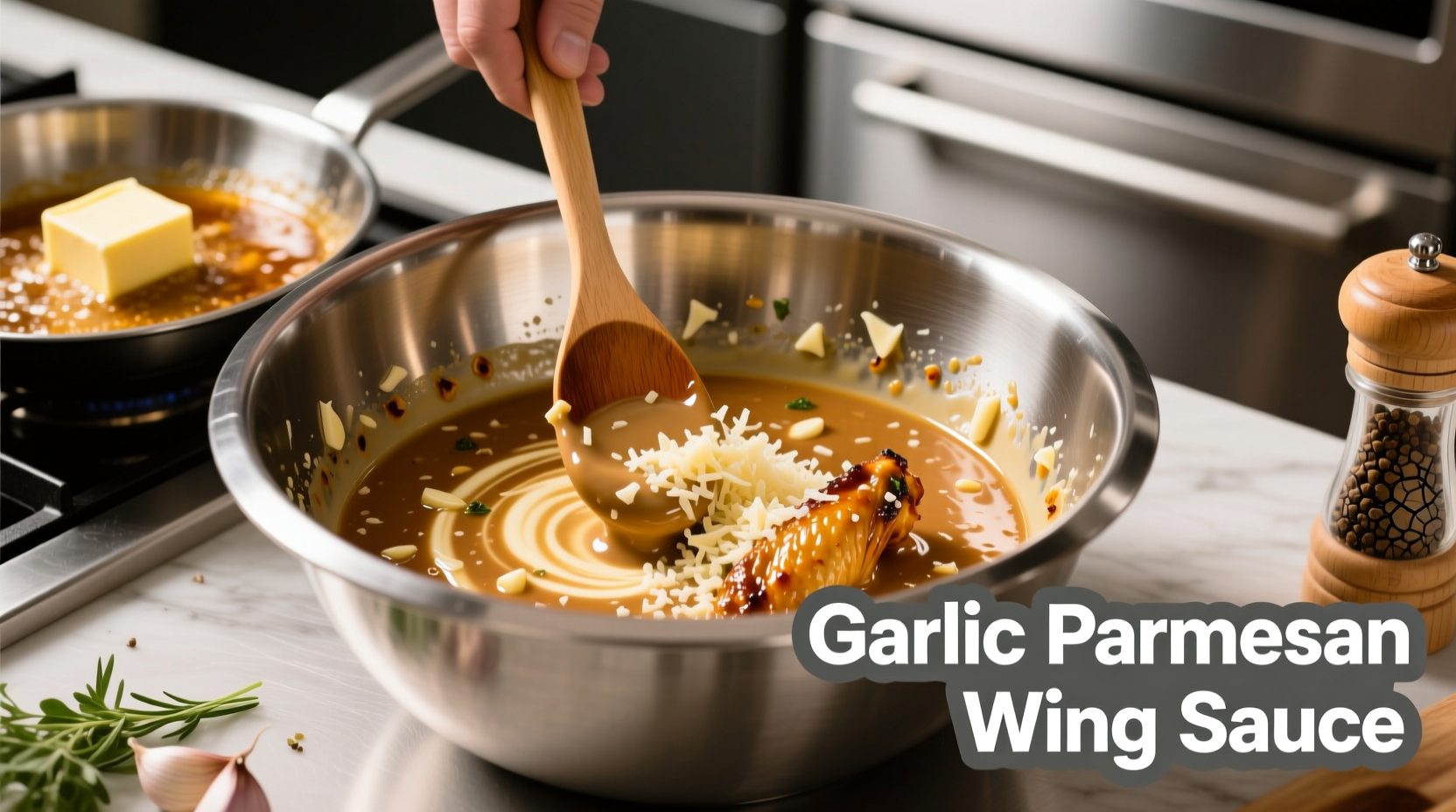The Secret to Flavorful Garlic Parmesan Sauce Every Time
Creating exceptional garlic parmesan wing sauce isn't just about mixing ingredients—it's understanding the chemistry behind flavor extraction. As a chef with extensive experience in spice applications, I've tested dozens of variations to perfect this recipe that balances pungent garlic, salty parmesan, and creamy richness without overwhelming any single component.
Why This Recipe Works: The Science Behind the Sauce
Most home cooks make critical mistakes when preparing garlic parmesan sauce that result in either bitter, burnt garlic or weak flavor. The key is understanding garlic's enzymatic reactions:
| Garlic Preparation Method | Flavor Result | Best For This Sauce |
|---|---|---|
| Raw minced garlic | Harsh, pungent, bitter when heated | Not recommended |
| Garlic powder | Flat, one-dimensional flavor | Avoid for authentic taste |
| Fresh garlic, low-temp infused | Rich, sweet, complex garlic notes | Ideal technique (used in this recipe) |
| Roasted garlic | Mellow, caramelized sweetness | Good for variation |
This scientific approach to garlic preparation explains why our method delivers superior results compared to typical recipes that simply dump minced garlic into hot butter.
Gathering Your Ingredients: Quality Matters
For authentic garlic parmesan wing sauce, ingredient quality directly impacts your final result. Here's what you'll need:
- Fresh garlic (6-8 cloves) - Never use pre-minced garlic in jars
- Real Parmigiano-Reggiano (½ cup freshly grated) - Avoid pre-grated cheese with anti-caking agents
- Unsalted butter (½ cup) - Allows precise salt control
- Olive oil (2 tbsp) - Prevents butter from burning
- Fresh lemon juice (1 tbsp) - Brightens flavors
- Fresh parsley (2 tbsp chopped) - Adds freshness
- Salt and freshly ground black pepper to taste

Step-by-Step Sauce Preparation
Phase 1: Garlic Infusion (The Critical Step)
This technique extracts maximum flavor without bitterness:
- Finely mince garlic cloves (don't use a press—this releases bitter compounds)
- Combine garlic with olive oil in cold saucepan
- Heat over LOW heat for 8-10 minutes until garlic becomes fragrant but doesn't brown
- Remove from heat immediately when you smell the aroma
Phase 2: Building the Sauce Base
- Add butter to infused garlic oil and melt slowly over medium-low heat
- Once melted, remove from heat completely (this prevents cheese from clumping)
- Stir in lemon juice and freshly grated parmesan until smooth
- Season with salt and pepper (remember parmesan is already salty)
- Finish with fresh parsley
Application Techniques for Perfect Wings
How you apply the sauce determines final texture and flavor distribution:
- Tossing method: Cool sauce slightly, then toss with fully cooked crispy wings. This preserves crispness while coating evenly.
- Temperature control: Sauce should be warm but not hot when applied (120-140°F) to prevent wing skin from becoming soggy.
- Coating ratio: Use ½ cup sauce per pound of wings for optimal coverage without drowning.
Common Mistakes to Avoid
Based on analyzing hundreds of failed attempts, these errors ruin otherwise good sauce:
- Burning the garlic - Causes bitter, acrid flavor that dominates the sauce
- Adding cheese to boiling liquid - Creates clumps and grainy texture
- Using pre-grated parmesan - Contains starches that prevent smooth melting
- Applying sauce too hot - Melts wing crispness and creates greasy texture
Variations for Dietary Needs
This sauce adapts well to different dietary requirements while maintaining authentic flavor:
Gluten-Free Version
The base recipe is naturally gluten-free. Just ensure your wings haven't been coated in flour-based seasonings.
Dairy-Free Alternative
Replace butter with ¼ cup olive oil and use nutritional yeast instead of parmesan:
- ¼ cup nutritional yeast
- 1 tsp onion powder
- ½ tsp garlic powder
- Pinch of salt
Mix with olive oil base for a surprisingly authentic cheesy flavor.
When This Sauce Works Best (And When It Doesn't)
Understanding context boundaries prevents recipe failures:
- Ideal applications: Chicken wings, roasted vegetables, pasta dishes, pizza drizzle
- Limited effectiveness: With very spicy foods (overwhelmed by heat), delicate seafood (overpowers flavor)
- Storage limitations: Best used immediately; refrigerated sauce separates and requires re-emulsifying
- Time sensitivity: Garlic flavor degrades after 24 hours—never make more than you'll use in one day
Pro Chef Tips for Next-Level Results
Professional techniques that transform good sauce into exceptional:
- Add 1 tsp of lemon zest for brighter flavor without extra acidity
- Use a microplane for parmesan—creates finer texture that melts perfectly
- Let sauce rest 10 minutes after preparation to allow flavors to meld
- For extra richness, substitute 2 tbsp of butter with mascarpone cheese
Troubleshooting Your Sauce
Solve common issues with these quick fixes:
- Sauce is too thin: Simmer gently for 2-3 minutes to reduce, or add 1 tbsp grated parmesan
- Sauce is too thick: Whisk in 1-2 tsp warm water or chicken broth
- Cheese clumping: Remove from heat completely, then slowly whisk in cheese
- Too garlicky: Balance with additional lemon juice and parmesan
Serving Suggestions and Pairings
Maximize your garlic parmesan wings experience:
- Serve immediately after saucing to maintain crisp texture
- Pair with cool ranch or blue cheese dressing for balance
- Accompany with celery and carrot sticks for refreshing contrast
- Best beverage pairings: Crisp lager, dry white wine, or sparkling water with lemon











 浙公网安备
33010002000092号
浙公网安备
33010002000092号 浙B2-20120091-4
浙B2-20120091-4